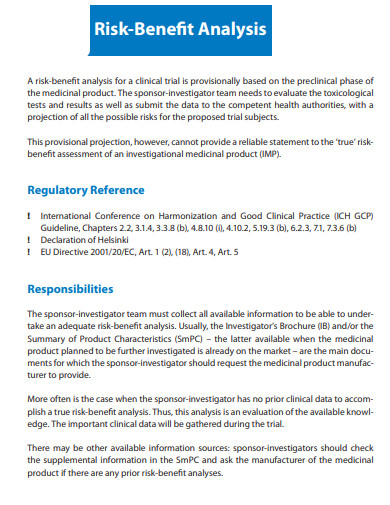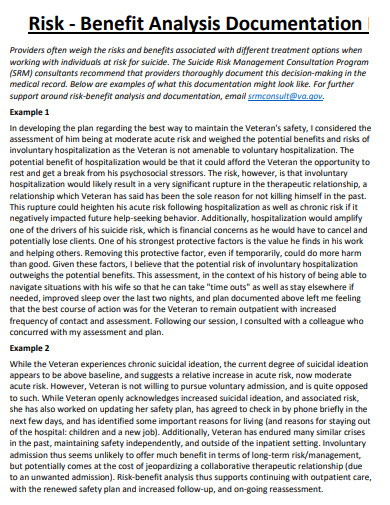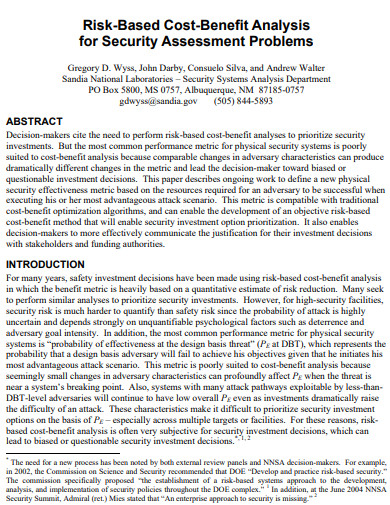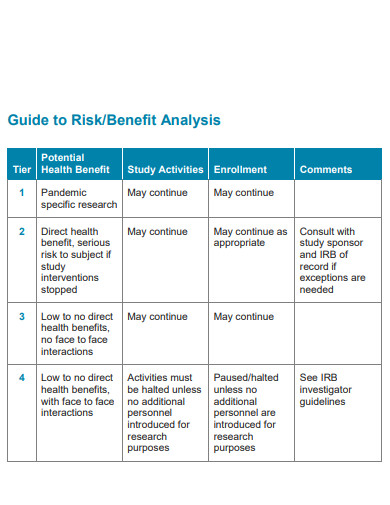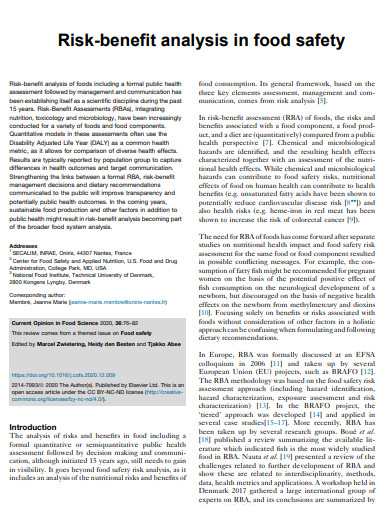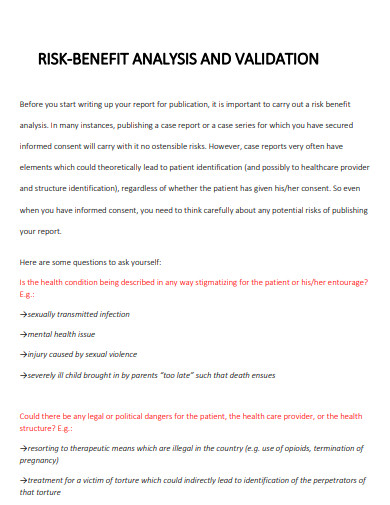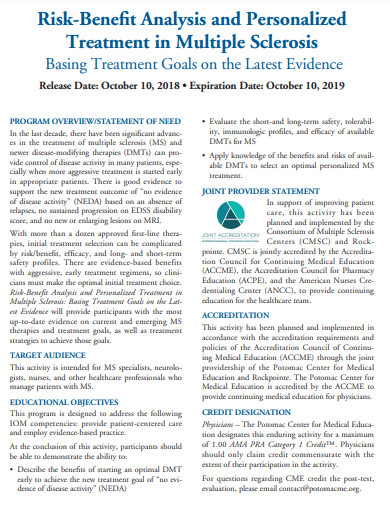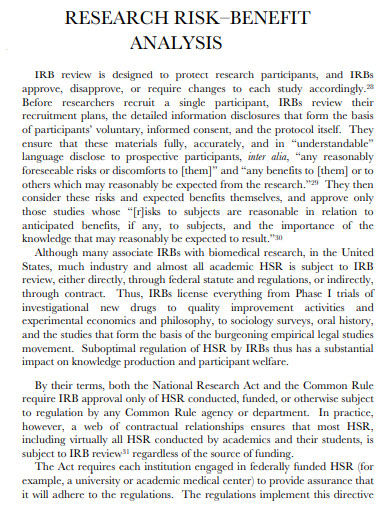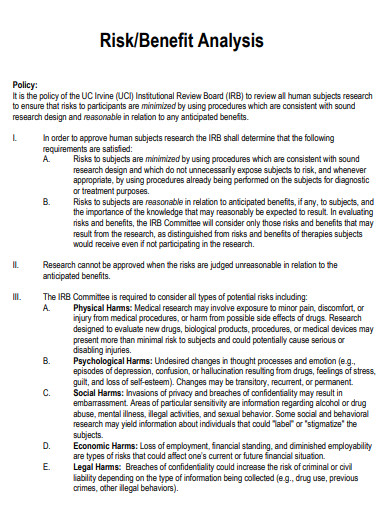Risks are taken by everyone as they continue their everyday lives but despite knowing this, they still carry on doing their daily routines. This is because the benefits that they gain outweigh the risks. A person understands that refusing to do tasks can give negative consequences. Most institutions, whether they are personal businesses, new businesses, or company businesses, utilize a risk-benefit analysis to calculate risks and compare the possible benefits they might receive after launching a project.
10+ Risk Benefit Analysis Samples
1. Risk Benefit Analysis
2. Risk Benefit Analysis Documentation
3. Sample Risk Benefit Analysis
4. Risk-Based Cost-Benefit Analysis
5. Risk Benefit Analysis Guide
6. Unified Risk Benefit Analysis
7. Risk Benefit Analysis in Food Safety
8. Risk Benefit Analysis and Validation
9. Risk Benefit Analysis and Personalized Treatment
10. Research Risk Benefit Analysis
11. Risk Benefit Analysis Template
What is a Risk-Benefit Analysis?
The risk-benefit analysis is used by companies in any field to base their decisions on the analyzed comparison of risks and benefits associated with the projects they are going to launch. By analyzing the risks and benefits of a situation, companies can evaluate if the benefits of the potential outcome outweigh the risks. In research, the investigator must ensure that the benefits have a greater ratio than the risks. Only then the study will be considered ethical.
How to Write a Risk-Benefit Analysis?
Considering the risk and benefits of a business project or a research study allows an individual to make better decisions that could positively affect them in the long run. To make an effective risk-benefit analysis, you need to acquire information about the risks, the possibility for it to happen, and the benefits as well as the possibility for these benefits to happen.
1. Determine the Risks
The first step in conducting a risk-benefit analysis is to identify and determine the risks associated with the procedures or methods that will be used in the research or project. You can also include risks that come with the procedures which are experimental or investigational.
2. Identify the Conditions under Which a Research Procedure must be Performed
In this step, you can identify whether you need additional procedures to complete or accomplish a procedure. In medicine, it could be the need to draw extra blood at a routine draw or an additional time in a CT scanner for research imaging.
3. Include Information about your Subject Population
Consider the information about your subject population such as their age and health status, sensitivity or vulnerability to risks created by the research or project, and whether they need extra protection to reduce risks and boost benefits.
4. Determine the Benefits
By determining the benefits, you will be able to recognize how the possible risks are being balanced by the benefits. This will also allow you to identify procedures or methods that have unnecessary risks with no valuable benefits.
FAQs
When can I use a risk analysis?
You can use a risk analysis when planning for a project so you can prepare for possible problems, determine whether to move forward or not with a project, improve safety management and potential risk management in the office, prepare for important events, and plan to do some changes in your environment.
What are the possible threats that an individual can encounter during a research or project?
An individual can face various existing and possible threats during a research or project such as Operational, Human-Caused, Reputational, Procedural, Financial, Technical, Natural, Political, and Structural Threats.
How do I control risks?
Controlling risks reduces their effects which you can do by using preventive and detective actions. The preventive action aims to prevent high-risk situations from occurring while the detective action identifies the factors in a process where a procedure can go wrong and provides steps to fix the problems that could eventually happen.
How can I effectively supervise my risk management?
After identifying the risks you are facing, you can avoid them by not proceeding with the project given that it poses no benefits to your company, sharing the risk as well as its potential benefit with a third party during a joint product development project, or accepting the risk after demonstrating how the potential gains outweigh the risks.
The risk assessment and benefit analysis enable businesses, companies, or even researchers to compare the possible risks and benefits of a project, activity, or research study. By conducting a risk-benefit analysis, you can identify the levels of risk that a project brings and where changes should be made. This also helps them determine whether to proceed or stop a project or research especially if it poses greater loss than gain.
Related Posts
FREE 10+ Analysis of Alternatives Samples in PDF
FREE 10+ Failure Mode and Effects Analysis Samples in PDF
FREE 10+ Make or Buy Analysis Samples in PDF
FREE 10+ Fishbone Root Cause Analysis Samples in PDF
FREE 11+ Cost Volume Profit Analysis Samples & Templates in PDF | MS Word
FREE 6+ Corporate Portfolio Analysis Samples in PDF
FREE 10+ Fault Tree Analysis Samples in PDF
FREE 10+ Comp Analysis Samples in PDF
FREE 10+ Fishbone Analysis Samples in PDF
FREE 10+ Individual Swot Analysis Samples in PDF
FREE 10+ 5 Year Analysis Samples in PDF
FREE 10+ Benefit Costs Analysis Samples in PDF
FREE 10+ Job Hazard Analysis Samples in PDF
FREE 10+ Primary Source Analysis Samples in PDF
FREE 10+ Critical Path Analysis Samples in PDF

